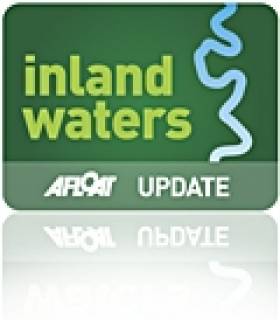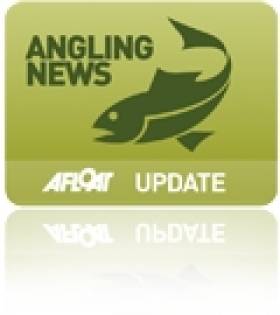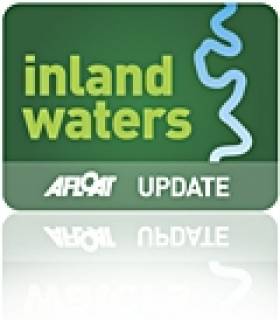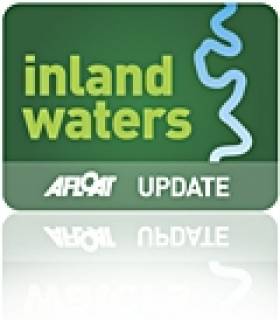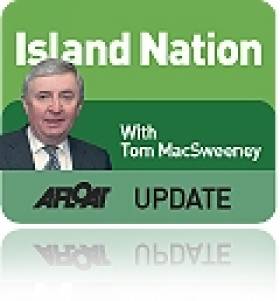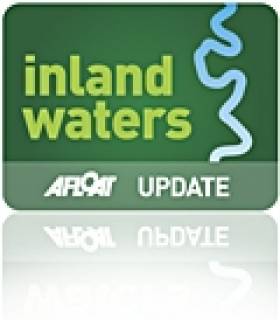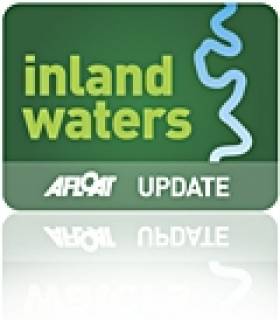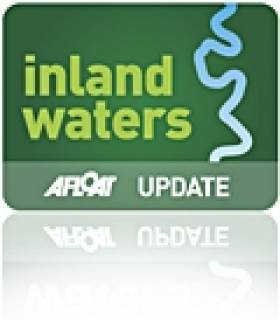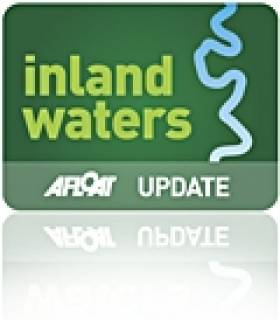Displaying items by tag: Grand Canal
Winter Closures on the Royal Canal, Grand Canal and Barrow Navigation
#WATERWAYS – In its latest marine notice Waterways Ireland has advised masters and owners of vessels that the following planned closures will be in place for the winter of 2011-2012.
GRAND CANAL – MAIN LINE
2nd Lock, Inchicore The canal will be closed at the 2nd Lock from December 2011 to February 2012 for the replacement of lock gates.
Ardclough The canal will be closed east of Henry Bridge to facilitate the laying of a storm water culvert by Kildare County Council – dates to be confirmed.
Tullamore The canal will be closed from 7th November 2011 to 5th March 2012 to facilitate the construction of three footbridges and a boardwalk by Tullamore Town Council.
Ballycommon The canal will be closed to facilitate dredging – dates to be confirmed.
GRAND CANAL – BARROW LINE
Glenaree to Rathangan The Barrow Line will be closed between 22nd Lock at Glenaree and 23rd Lock at Rathangan from 1st November 2011 to 17th March 2012 to facilitate dredging.
ROYAL CANAL
Spencer Dock, Newcomen Bridge There will be no further lifts of Newcomen railway bridge until the 2012 boating season.
1st to 5th Locks, Dublin The locks will be closed from November 2011 to March 2012 for repairs to the gates.
5th and 6th Levels, Cabra The canal will be closed until January 2012 for dredging and relining of the channel.
8th Lock, Reilly’s Bridge The lock will be closed from November 2011 to March 2012 for repairs to the gates.
33rd to 34th Lock The canal will be closed for essential maintenance works – dates to be confirmed.
Mosstown Harbour to 41st Lock The canal will be closed for essential maintenance works – dates to be confirmed.
BARROW NAVIGATION
Bagenalstown Lock The lock will be closed for essential maintenance – dates to be confirmed.
Slim Pickings for IWA Angling Day
There was a big turnout for the Irish Wheelchair Association's annual Angling Day recently, The Irish Time reports.
As many as 90 competitors, representing 11 angling centres across the country, staked out spots along the Grand Canal at Lucan for the seventh year running.
Gusty conditions on the day resulted in a grand total of zero catches in the three-hour competition - a stark contrast to last year's contest when more than 30 were caught and released.
But the anglers didn't let that get their spirits down, as the day was rounded off with a packed-out barbeque for competitors and volunteers.
The Irish Times has more on the story HERE.
Largest Vessel Transits Samuel Beckett Swing-Bridge
She remained alongside this berth which is normally used by large commercial ships until the vessel sought a berth much closer to the city-centre. This led to a shift of berths in the evening when the 2003 built vessel headed upriver to the Dublin City Moorings facility at Custom House Quay, but this firstly required transiting through two bridges.
With a beam of 10.6m Fortunate Sun entered through the East-Link toll-lift bridge followed by the Samuel Beckett bridge, the Liffey's newest crossing point which opened in late 2009. The €60m bridge was commissioned by Dublin City Council and designed by the Spanish architect engineer Santiago Calatrava. To read more on the bridge click HERE.
Fortunate Sun is registered in the Caymen Islands and is capable of over 17 knots on a range of 5000 nautical miles. She has a steel hull and an aluminium superstructure and interiors also by Tim Heywood Design. In the early hours of tomorrow morning the vessel built by Oceanfast is to depart through the 5,700 tonnes bridge which was delivered by barge after a five-day voyage from Rotterdam.
There has been previous transits of the bridge notably the annual Dublin Rally organised by the the Inland Waterways Association of Ireland (IWAI). This year's Dublin Rally took place on 1 May when boats travelling on the Royal Canal descended via Croke Park and entered the Liffey at Spencer Dock. This required the Iarnrod Éireann bridge-lift and the water level in Spencer Dock to be lowered so to allow safe clearance under the Sheriff St. bridge.
From there the IWAI flotilla made the short passage downriver to re-enter another inland waterway system at the Grand Canal Dock, marking where the Liffey connects with the city's southern canal. The 2011 Dublin Rally was the first time since 1955 that boats could enter Dublin from the Shannon via the Royal Canal and the first time since 2004 that boats also joined from the Royal Canal.
- powerboats
- motorboats
- inland waterways
- Dublin Port
- Dublin
- Grand Canal
- IWAI
- Royal Canal
- DDDA
- Inland Waterways Association of Ireland
- Dublin City Council
- Spencer Dock
- River Liffey
- Ports and Shipping News
- EastLink Toll Bridge
- Dublin Port news
- Grand Canal Dock
- Dublin Docklands Development Authority
- M.Y. Fortunate Sun
- Tim Heywood Design
- Lifffey
- Dublin City Moorings
- Custom House Dock
- Powerboat news
- Motoryachts
- Sir John Rogerson Quay
- Inland Waterways news
- Dublin Rally
- Ianrod Eireann
- Oceanfast
- Scottish Western Isles
Sailors Plan Month Long Journey from Shannon to Liffey and Back
Nenagh resident and inland waterways enthusiast, Nick Theato, single-handed aboard 'Bo-Bo, a five metre Pedro trailer/sailer and Pat Kelly, Killadangan, with his son Andrew in 'Shu-Ra-Nu', a 6 metre Etap 20 trailer/sailer, plan to raise funds for Lifeboats Ireland by undertaking the IWAI Green & Silver Challenge in June, 2011. Their fundraising target is €5,000.00.
On the 25th June, 1946, Tom and Angela Rolt left Athlone aboard 'Le Coq', a 28ft.x8ft. converted ship's lifeboat on a voyage that would inspire contemporary and successive generations of inland waterways enthusiasts.
Tom Rolt wonderfully documented the voyage in his book 'Green & Silver', published in 1949, which has since become a classic. This work was instrumental in inspiring the small group who founded the Inland Waterways Association of Ireland in 1954, whose objective was to save the Shannon navigation from strangulation by low bridges. Indeed, the colour scheme of the IWAI's logo and burgee derive from the cover design of Rolt's book.
With the re-opening of the Royal Canal in October 2010, it is now possible to retrace Rolt's journey in full and complete the circular route formed by the Royal Canal, River Liffey, Grand Canal, River Shannon and Camlin River.
To celebrate this event, the IWAI has initiated the 'Green & Silver Challenge' in an effort to encourage people to make the circular journey. Nenagh resident, Nick Theato single-handed aboard 'Bo-Bo, a 16 foot Pedro trailer/sailer and Pat Kelly, Killadangan, with his son Andrew aboard 'Shu-Ra-Nu', a 20 foot Etap trailer/sailer, plan to raise funds for Lifeboats Ireland by travelling the full Green & Silver Route throughout June 2011.
Departing on June 1st, they will travel from Dromineer through Lough Derg and Lough Ree and enter the Royal Canal at Richmond Harbour. They plan to cross the Liffey in Dublin 17 days later, where they will take a welcome day off before commencing the return journey via the Grand Canal to Shannon Harbour. The journey will take approximately 28 days, will cover a minimum of 333 km. and navigate through 92 locks (some double), 91 of which are manual. Their fundraising target is €5,000
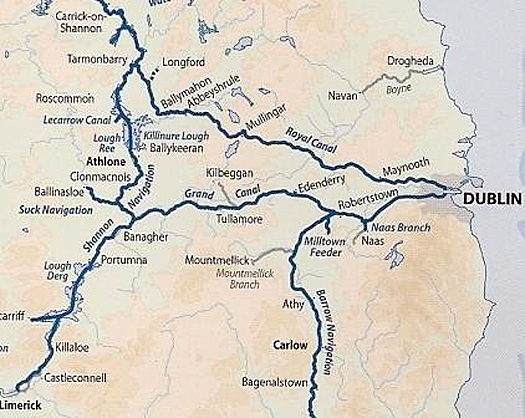
Nick Theato is Treasurer of the Lough Derg RNLI Fundraising Branch and Lough Derg Lifeboat Station at Dromineer.
Pat Kelly is Secretary of the Lough Derg RNLI Fundraising Branch.
Nick and Pat welcome all sponsorship, however modest. Contributions can be pledged online at http://www.mycharity.ie/event/green_silver_event/. Nick may be contacted on 086 1738014 ([email protected]). Pat is at 087 6908099 ([email protected]).
For further details / interviews / photos: Contact Pat Kelly at 087 6908099 ([email protected]). Support photography: Gerardine Wisdom 087 6522582 ([email protected]).
Grand Canal
The First All Ireland Counties Sailing Championships
He has come up with the idea of a Waterways Ireland Inter-Counties Sailing Championship, which will be held on Sunday, June 26, at the Grand Canal Dock in Dublin.
Waterways has responsibility for the management, maintenance, development and restoration of inland navigable waterways, principally for recreational purposes. It is one of the six North/South Implementation Bodies established under the British-Irish Agreement of 1999.The waterways under the remit of the body are the Barrow Navigation, the Erne System, the Grand Canal, the Lower Bann, the Royal, the Shannon-Erne Waterway and the Shannon Navigation.
"What we intend is to make sailing centre stage in midsummer," he told me. "We are inviting teams from counties throughout Ireland to battle in the heart of Dublin for the first time to see which county has the best sailing team."
The invitation is not limited to clubs only.
"Sailors from around Ireland are invited to form teams composed of a crew of up to 5 people capable of handling a 27ft keel boat, including at least 1 female, to represent their counties in what will be the battle of the sailing tribes and colours of Ireland. We will find out which county is the best. This is the chance to find out. Racing will be in a series of sprint heats of approximately 20 minutes each leading to semi-finals and finals to decide the winner."
With boats constantly in close quarters, both with each other and the quayside walls, this should be a testing and somewhat 'thrilling' experience for the sailors! It should also be an entertaining spectacle for the public with viewing areas on the quay walls and at Grand Canal Square.
The championship will be sailed from 9 a.m. to 4 p.m. A fleet of the 1720 one-design boats, 27 feet in length, will be provided so that teams compete on a level basis, making skill the deciding factor.
The website is www.waterwaysracing.com
This builds on the Liffey Docklands Challenge which initiated sailboat racing on the Liffey near the city centre. The Grand Canal Dock is part of Ireland's inland waterways system and comprises forty-four acres of non-tidal freshwater in Dublin's Docklands. It has its own marina and a watersports centre, with adjacent hostelries and restaurants, as well as the Grand Canal Theatre.
"This event will be a centrepiece in the Docklands Summer Festival," says Paul, who competed in the French single-handed Figaro Race and is one of those developing the Irish Double and Solo Racing Group. The event will be sponsored by Waterways Ireland.
"We are delighted to do so and hope for participation from both North and South, in keeping with our own remit as an All-Ireland inter-governmental agency," said Martin Dennany, the Waterways Marketing Director. "We are looking forward to this historic dock in Dublin becoming a sailing centre for the challenge."
Celebrating the Three Sisters Navigation
This year we celebrate the 220th anniversary of the opening of the Barrow Navigation. This linked the Grand Canal with the rivers Barrow, Nore and Suir, and opened up a large area of the hinterland to the great ports of Dublin and Waterford. When the canals closed to commercial traffic in the 1960s it was feared that all use of the navigation would soon cease. Indeed, non-commercial traffic did become very light, but now, following excellent remedial works by Waterways Ireland we welcome a new era for this navigation, one which will bring new life and vitality to the waterway in the towns and villages along the system.
A hundred years ago, 1,200 boatmen were engaged in the business of transporting cargo, connecting people in inland towns with those in Irish ports, and in turn linking them with the great sea ports of the world. Today, many of their descendants live along our inland navigations.
Three of these great canal boats, numbers 72M, 68M and 107B, escorted by a flotilla of other HBA boats will, over the next few months, travel the entirety of the Navigation including Carlow, Waterford, Carrick on Suir, Inistioge and all points in between. The crews are anxious to meet with those whose families had connections with the commercial trade along the waterway, and perhaps even re-unite some long retired boatmen with their old boat.
The following are the expected arrival dates in various locations over the next few weeks:
° Carlow April 9th from 14.00
° Leighlinbridge April 16th from 14.00
° Bagenalstown April 24th from 13.00
Navigable Channel in Shannon Harbour Now Open
Inland waterways Marine Notice No. 27 of 2011 Waterways Ireland advises masters and users that the navigable channel in Shannon Harbour on the Grand Canal is now open. The new house boat facility remains closed to the public as construction work continues.
Click this link for the latest boating news on Ireland's Inland Waterways
Dead Swans Found On Grand Canal
The Inland Waterways Association of Ireland (IWAI) has confirmed a number of reports of dead swans found along the Grand Canal in south Dublin.
IWAI representative Colin Becker said some of the dead birds were taken away for analysis, while a number of sick birds were taken for treatment by the DSPCA.
As of yesterday morning "another half dozen" deceased swans were discovered between Portobello Harbour and Suir Road Bridge.
Initial reports are pointing to a form of botulism or other bacterial infection. No source had yet been pin-pointed but "a number of dead and rotting sea-fish were found in the area", according to Becker.
He added that swans are known to be susceptibe to bacterial infections.
The IWAI ruled out the presence avian flu, and dismissed suggestions that dredging of the canal might have disturbed bacteria in the sediment, as the infected swans were found some distance from the current dredging site.
Waterways Ireland to Apply 'Five Day Rule' This Month
Waterways Ireland has reminded all Masters and users of the Grand Canal on Ireland's inland waterways that it intends to move vessels double or tripled berthed on the Grand Canal and Shannon Harbour that contravene the five day rule.
The enforcement of SI No. 24/1988: Canals Act, 1986 Bye Law (25 ,1 (d)) applies to all hard edged moorings in the harbour area with effect from 17th March 2011.
At Tullamore this area is deemed to be between White Hall Bridge and Waterways Ireland Offices.
At Shannon Harbour The area is deemed to be between 35th Lock Eastwards to Griffith Bridge.This enforcement will clear the channel for navigation and facilitate the movement of both visiting and Shannon Harbour based vessels. Alternative berthing is available upstream of Griffith Bridge. Boats should only be moored singly on either side of the canal to permit the safe passage of craft. Bye Law (25, 1 (b) states that sufficient space must remain so that two vessels can pass at the same time. Berthage is also available on the North Bank between 35th and 36th Lock.
Vessels in contravention of this bye-law will be moved East or West of the area as space becomes available. Non permitted vessels will also be moved.
This enforcement will facilitate the movement of visiting vessels. Vessels should only moor directly onto quay walls and not double and triple berth. Alternative berthing is available on the main line.
Vessels in contravention of this bye-law will be moved onto the main line. Non permitted vessels will also be moved.
Owners and Masters of vessels are requested to assist in this enforcement in order to open the area to more vessels and facilitate the proper use of the harbour.


























